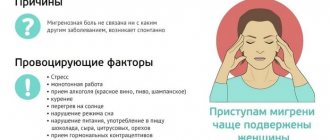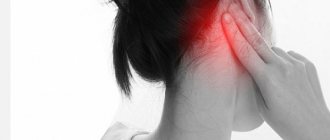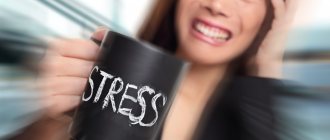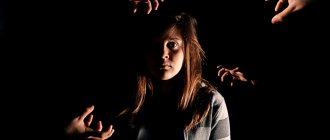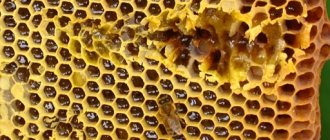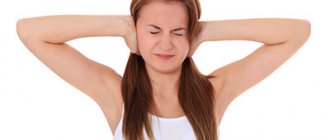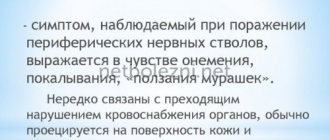See more diseases starting with the letter “K”: Causalgia, Brain cyst, Cluster headache, Tick-borne encephalitis, Kozhevnikov epilepsy, Colloid cyst of the third ventricle, Coma, Compressive myelopathy, Balo concentric sclerosis, Radicular syndrome, Corticobasal degeneration, Craniovertebral anomalies, Craniospinal tumor , Craniopharyngioma, Myasthenia gravis crises, Hemorrhage into the ventricles of the brain.
Cluster headache: causes, symptoms, treatment
Primary unilateral cephalalgia with characteristic repeated attacks in the periorbital region, supplemented by ipsilitary disorders of the autonomic nervous system is called cluster or cluster headache. To make a diagnosis, it is necessary to study the clinical picture and exclude other types of hemicrania. Treatment options include triptans, calcium channel blockers, glucocorticosteroids, oxygen inhalations, topical anesthetics and anticonvulsants. Invasive techniques include: transcutaneous occipital nerve stimulation, suboccipital block, radiofrequency rhizotomy.
Preventive measures
It is possible to prolong remission and alleviate the painful syndrome during attacks by eliminating provoking factors. Patients who are regularly tormented by cluster cephalgia are advised to avoid unnecessary worries and stress, devote time to rest and proper sleep, and give up alcohol and smoking. Although it has not been proven that quitting nicotine and alcohol stops cluster pain, it is advisable not to abuse them at the first signs of cephalalgia.
You need to pay attention to your diet. Do not eat foods with a long shelf life, refrain from marinades, smoked meats, pickles, carbonated water, spicy, fried
Enrich your menu with dishes containing vitamin B, consume natural antioxidants, drink green tea, eat fruits and vegetables. Fish, seafood, and wholemeal bread are welcome on the table.
Cluster intolerable headache often occurs after a hot bath, nap, or vigorous exercise. It is advisable to avoid these factors, especially during an exacerbation.
Doctors prescribe preventative medications that shorten periods of cephalalgia:
- Anticonvulsants (Topamax, Depakine, Carbamazepine), used in the treatment of episyndrome and cluster headaches. They are prescribed in extreme cases.
- Corticosteroids, which stabilize the patient’s condition after taking painkillers. They are drunk in weekly courses. If cluster headache returns, repeat therapy.
- Lithium drugs that affect the hypothalamus (Litonat, Escalit), helping to eliminate pain. Medicines have many contraindications, one of which is obesity.
- Medicines that block calcium channels (Lekoptin, Finoptin, Verapamil), which are the main preventive agents for relieving cluster cephalgia.
Botox injections are used, which not only smoothes out wrinkles, but also eliminates chronic attacks of pain in the head. It is also recommended to use active supplements containing melatonin, which reduce pain.
Only a doctor, taking into account individual characteristics, can prescribe medications to a patient to relieve cluster pain. After a thorough examination and diagnosis, the specialist will determine the dosage and duration of medication. It is necessary to have blocking agents in your home medicine cabinet: Verapamil, Lithium Carbonate and other commonly prescribed medications.
General information about pathology
Cluster or cluster cephalgia (PHB, migraine Harris neuralgia, histamine cephalgia, ciliary neuralgia) is a rarely diagnosed form of headache that occurs in 0.1-0.4% of the population. The estimated prevalence rate is between 55 and 200 cases per 100,000 people. At the same time, hereditary predisposition is detected in 2.5-4% of patients. Among representatives of the stronger sex it occurs 3-4 times more often. The peak of the disease in women occurs at 15-20 years and 45-50, and in men the onset is typical for 20-29 years.
What to do if you suspect cluster pain in yourself or your loved ones?
It is important to consult an experienced doctor and talk about your symptoms in detail. European statistics show that the majority of patients who suffer from the disease are not correctly diagnosed for several months or even years. This seriously worsens the patient's condition and affects his life. Before making a diagnosis, a thorough examination is necessary, because brain aneurysms or hematomas can cause similar symptoms.
It is important to distinguish: chronic paroxysmal hemicrania
This disease is similar to cluster pain, but is 8 times more common in women. The main difference is the course without remissions and exacerbations. The pain may be burning, boring or throbbing. Most often the attack lasts 10-15 minutes, but in some patients it lasts up to 16 hours. The number of attacks is usually greater than with cluster pain: some patients may have more than ten per day. Chronic paroxysmal hemicrania is treated better than cluster pain. Patients are prescribed indomethacin. The drug effectively stops and prevents attacks.
Causes
The etiology of fascicular cephalgia has not been established. Experts suggest that one of the most likely causes is pathological activity of the hypothalamus. The theory indirectly confirms the rhythm of the attacks. Trigger factors vary from person to person, but according to statistics, the following situations most often provoke headache attacks:
- Taking pharmacological drugs, such as histamine administered subcutaneously or intravenously or sublingual nitroglycerin;
- Alcoholic drinks, even in small doses, can provoke an exacerbation. Moreover, if the trigger factor was alcohol, the attack turns out to be resistant to usually effective medications. Episodes from alcohol intake occur only during the cluster period; they are not observed during remission;
- Physical or psycho-emotional stress, such as working at a computer for a long time or watching TV;
- Worsening occurs when holding your breath after a deep breath.
Why is this happening?
As often happens, there are several versions.
- In 5% there is a genetic predisposition, although the specific gene mutation has not yet been identified. Cluster pain in a close relative increases the risk of the disease several dozen times.
- There is a version that the hypothalamus is “to blame”. It initiates the attack, and then the trigeminal nerve is involved in the attack.
- The same pattern as for migraines is not denied: when vasodilation irritates the branches of the trigeminal nerve and pain begins.
- Disturbances in circadian rhythms—the pattern of sleep and wakefulness—are also cited as a possible cause of attacks.
The mechanism of development of cluster headaches
The pathogenesis has not been fully studied to date. Cephalgia is provoked by narrowing of the proximal parts of the internal carotid artery and the ophthalmic artery, while the level of pain neuropeptides increases, and the fibers of the V pair of cranial nerves are activated. Circadian autonomic changes include hormonal imbalances, including the production of cortisol, testosterone, prolactin, fluctuations in blood pressure and body temperature. Such symptoms prove that PHB is associated with dysfunction of the adrenal glands and the hypothalamic-pituitary system. In addition, there is activation of the gray matter of the posterior part of the hypothalamus during cephalalgia attacks.
This is confirmed by PET results. According to the observation of specialists, the brain stem also plays a role in the development of cluster headaches, which is confirmed by disruption of the sleep structure, that is, the loss of the REM sleep phase before the onset of a painful episode, attacks during sleep and episodes of respiratory arrest.
Treatment with folk remedies at home
1. Lemon. Cut off the lemon zest (without the white part), put it in just boiled water for a minute. Apply to temples.
2. Ginger. Pour a tablespoon of grated root into a glass of boiling water and let it brew for 10 minutes. Drink as tea in the morning on an empty stomach. The course of treatment is 3 weeks, then a break is 1 month.
3. Healing baths with lavender or lemon oil. Add 7-10 drops to water and take a bath for 15 minutes.
4. Apple cider vinegar. Dilute 1 tablespoon in 500 ml of cold water. Wet the gauze and apply it to the forehead. published econet.ru
PS And remember, just by changing your consciousness, we are changing the world together! econet
Classification of the disease
There are several forms of cluster headache. Classification is carried out according to the frequency of attacks, since the clinical picture is typical. The presence of such a classification allows for more successful therapy. There are two forms of manifestation that may change over time:
- Chronic is observed in 20% of patients. Characterized by attacks occurring over a period of a year or longer. Clinical remissions do not occur or they do not exceed twice a month. The chronic form of hemicrania fasciculata is most often resistant to treatment.
- The episodic form is observed in 80-90% of patients and is characterized by the presence of 2 cluster periods, which in total last from 7 days to a year. Clinical remission is at least a month.
What are the symptoms of PHB?
The symptoms of PHB are well recognized. One of the main symptoms is the excruciating, unbearable nature of the pain. The pain always occurs on one side; Rarely, in episodic PHB, the side of pain may change from one painful period to another. The pain is localized around or in the eye area and is described as burning, stabbing, or boring. The pain increases rapidly, reaches a maximum within 5-10 minutes and, if left untreated, lasts from 15 minutes to 3 hours (on average 30-60 minutes). Unlike a migraine attack, during which most patients tend to lie down and remain as calm as possible, patients with PHB, on the contrary, cannot sit or lie down and become agitated and restless.
Also, on the pain side, most patients experience redness of the eye, lacrimation, swelling, and sometimes drooping of the upper eyelid. There may be nasal congestion or clear nasal discharge on the side of the pain. At the same time, the other side of the head does not bother the patient at all.
Symptomatic picture
Patients at risk are tall and have well-developed muscles. Personal qualities combine high ambition with internal helplessness and indecision. During attacks, cephalalgia occurs abruptly and immediately reaches a peak. On average, each episode can last about an hour, and can range from 15 to 180 minutes, after which they suddenly stop. Attacks begin mainly at night. The exacerbation period for a typical cluster headache ranges from two weeks to two months.
The symptomatic picture of each attack includes unilateral burning or cutting cephalalgia. It is most often localized on the left side. The epicenter is the area of the eyeball. Patients describe it as a feeling of “tearing the eye” or “pressing the eye from the inside.” Irradiation is noted in the ear, cheek, and teeth on the affected side. There are trigger zones, pressure on which increases the pain. These include the splenius muscles of the head and neck, and the trapezius muscle. Pain may radiate to the shoulders, scapula, and neck ipsilaterally. In a third of cases, photophobia and vomiting are noted.
A characteristic clinical sign of PHB is the inability to maintain a stationary horizontal position, since slight physical activity partially relieves pain. During an attack, the patient rushes about, punches the walls or claps his hands. In addition, there are autonomic disorders such as hypoactivation of the sympathetic and increased tone of the parasympathetic system. This is expressed in hyperhidrosis of the orbital region, nasal congestion and mucus discharge, conjunctival hyperemia, hypersalivation, Horner's syndrome, which includes enophthalmos, ptosis and miosis ipsilaterally.
Diagnostic methods
To make a diagnosis, it is necessary to analyze the clinical picture and distinguish it from other forms of paroxysmal hemicrania. During the medical history, the neurologist clarifies the presence of trigger factors and similar episodes in relatives. If the symptomatic picture is atypical, there have been injuries, or there is a suspicion of neoplasms or other morphological disorders of the central nervous system, then it is necessary to resort to hardware diagnostic methods such as CT or MRI of the brain. If organic pathology is excluded, the anamnesis is compared with the diagnostic criteria for cluster headache. They are prescribed in the International Classification of Headaches. PCB is characterized by:
- Acute headache in one half of the head, localized in the temporal or periorbital region; minutes;
- The duration of cephalalgia ranges from to
- The presence of at least five episodes;
- The frequency of attacks ranges from 1 time every 2 days to 8 times a day;
- In addition to headache, one or more symptoms are present: pupil dilation, drooping or swelling of the eyelid, swelling of the nasal mucosa, rhinorrhea, conjunctival injection, excessive tear production, hyperhidrosis of the face and forehead, inability to maintain a lying position or agitation;
- There is no reliable connection with other probable pathologies.
It is necessary to distinguish cluster headaches from trigeminal neuralgia, migraine, and paroxysmal hemicrania. At the same time, migraine is characterized by the patient’s desire for a state of rest, genetic predisposition and the presence of an aura. Trigeminal nerve neuropathy is accompanied by short-term pain, similar to an electric shock, and worsens with increased use of the masticatory muscles. Patients try not to touch their face, as this increases pain. Women are more likely to suffer from paroxysmal hemicrania. The duration of the attack is about half an hour, and the frequency of attacks reaches 40 episodes per day.
“Pain in your head: Where does it come from and how to get rid of it”
Headaches are most often the result of our behavior: lack of sleep, skipping meals and water, stress, eye strain, and so on. The pain can be relieved, but it cannot be completely avoided - the unpleasant sensations that incapacitate us allow the blood vessels to return to normal. In the book “Pain in your head: Where does it come from and how to get rid of it” (Alpina Non-Fiction publishing house), translated into Russian by Maria Smirnova, neurobiologist Amanda Ellison explains what headaches are like, where they come from and why painkillers Sometimes drugs do more harm than good. N+1
invites its readers to familiarize themselves with an excerpt dedicated to cluster headaches and its causes.
A cacophony of cluster headaches
I first encountered cluster headaches at age 25 while working at Oxford University. I was returning to the laboratory after lunch and a second before the elevator door closed I saw a student, whom I later learned was named Rachel. She sat hunched over in the hall at the table and literally banged her head against the wall on which hung the sign “Sealed Asbestos.” I pressed the button to open the elevator again and carefully approached her. Some part of us always thinks that if someone is upset, they probably just want to be left alone, but something about the involuntary nature of the stranger's movements made me wary. Besides, if she didn't want me around, she would have asked me to leave, and of course I would have complied.
I quietly sat down next to the girl, who now rested her forehead on the table. Her face was covered with hair. A gentle touch on her shoulder elicited a groan, as if I had made her condition worse. Finally she raised her head and began to sway; She clearly felt bad. I saw that Rachel's left eyelid was drooping, the eye itself was watery and bloodshot. The girl's face was red and her nose was stuffy. I looked into her eyes and it seemed to me that she was panicking. The thought flashed that she had been attacked, hit in the face, or had fallen down the stairs. However, all this was wrong. “My head hurts... It feels like it's about to explode... It's the worst thing I've ever experienced. “Nothing’s helping,” Rachel whispered, squeezing the left side of her head as if trying to contain its contents.
Welcome to the world of cluster headaches.
What is a cluster headache?
There are several common descriptions of cluster headache, which at the time I met Rachel (20 years ago) was unknown and relatively poorly defined. One of my favorite names for this type of headache is Bing's erythroprosopalgia. The term sounds very scientific, but I'm not sure that Robert Bing, the award-winning German-Swiss neurologist active in the early 1900s, would be impressed by my categorization. In fact, the name simply means redness (erythro-) of the face (prosopo-) combined with pain (-algia). Later, in 1926, London neurologist Wilfred Harris named the disorder migrainous neuralgia, further adding to the confusion and equating the disease with a migraine attack. This was followed by Horton's cephalgia, or more commonly remembered, Horton's headache, named after Bayard Horton, who described its pathogenesis (development of the disease) in 1939. I find it difficult to believe that anyone would want something so unpleasant to be named in his honor, but apparently to each his own.
The name for cluster headache that best describes the condition from an anatomical point of view is sphenopalatine (determining a group of nerve cells associated with the trigeminal nerve) neuralgia; but I am not entirely satisfied with this term either, because it is too special. However, by 1953, Charles Kunkle coined the concept of “cluster headache” because attacks tend to “cluster” both during the day and during a particular season of the year; This is the term I use. The matter eventually led to the founding of the Cluster Club in 1974 by the Norwegian neurologist Ottar Sjaasted, whose members included academic and clinical researchers. There is no doubt that interest in headaches has increased dramatically since 1960, when various societies and associations of this kind arose on both sides of the Atlantic. Subsequently, Ottar continued to fight the political storm, so that in the early 1980s. to unite representatives of world science specializing in the study of headaches within the framework of the International Headache Society.
Over the years, our understanding of cluster headaches has changed radically. Now, when it comes to figuring out what causes them, many factors are taken into account. Back in Horton's time, in the 1930s and 1940s, histamine was identified as the culprit, which was thought to be reflected in the seasonal nature of this group of headaches (they tend to occur in the spring) and in the specific symptoms that characteristic of them. However, gradually genetic abnormalities, activation of the autonomic nervous system, dysfunction of the hypothalamus and other factors were added to the list of possible causes. Some features of the lifestyle of patients are also considered, and here, first of all, attention is paid to smoking and alcohol abuse. So let's think about how cluster headaches manifest and how people experience them, to decide what impact each cause has and what we can do about it.
What is a cluster headache?
For a headache to be considered a cluster headache, it must have certain symptoms. Rachel, whom I met at Oxford, had an almost classic case, except that cluster headaches are four times more common in men than women. The patient's eye should become red and watery, part of the nose will be stuffy or mucus will be actively coming out of one nostril, the eyelid will be drooping or swollen, the pupil will be constricted, the face will be red and covered in sweat. In addition, the patient will become restless and sway or pace rapidly. He complains of pain somewhere above the eye and towards the temple as excruciating, as if someone is trying to press his eye into the socket or take it out. All this is felt only on one side of the head, but it is known that during an attack the side can change. Of course, the name “cluster” itself, as well as the indicators that tell us when, how and how often this headache occurs, are the key differences between it and migraine. Attacks occur from one to eight times a day every second day, and at least five attacks with the symptoms described above must be recorded at any stage of the disease before a diagnosis can be made.
These features were defined as cluster headache in 1998, when the International Classification of Headache Disorders (ICHD-I) first recognized the disease as a distinct disorder. Since then, two more editions of the ICHD have been released, with the latest, ICHD-III 2021, containing two descriptions depending on whether a particular cluster pain is episodic in nature (at least two cluster periods lasting from seven days up to one year, separated by a pain-free period of more than one month) or chronic (occurs without a period of remission, or pain-free periods last less than a month, and this continues for a year, or even longer). What happens in the body, what processes cause all these symptoms?
Causes of cluster headaches
The first clue lies in our genes, because it is under their control that proteins are created - the building blocks that determine not only how we look, but also how our bodies function. The reason we suspect genetics is that 5 to 10 percent of cluster headache patients have a family history of the condition. However, it is likely that many genes are involved.
Some basic biology: each of our cells has 46 chromosomes (23 pairs), but each of our gametes, that is, eggs in women and sperm in men, contains only 23 single unpaired chromosomes. When the male and female gametes fuse, these chromosomes are combined into 23 pairs (46 chromosomes in total), which is how we get one half of the chromosomes from our male parent and the other half from our female parent. 22 pairs of chromosomes are autosomal (non-sex). The 23rd pair are the sex chromosomes, where you will have two X-shaped chromosomes if you are genetically female, and one X-shaped and one Y-shaped if you are genetically male. Sometimes, as with cluster headaches, genetic abnormalities can be passed along with all the other traits (see page 183 in Chapter 7 to learn more about the traits).
Some traits are dominant, which means that the presence of a given gene in one of the parents is sufficient for it to appear in the offspring. However, if the trait is recessive, the gene must be passed on by both parents, and then the trait will appear in the child.
However, while it is true that the traits encoded by the 100,000 genes on each chromosome make us who we are, there are other factors at play. The most significant is known as epigenetics, or conditions that influence genes to be turned on or off without affecting the DNA sequence. This is why cloning rarely produces genetically identical organisms that look exactly alike
, thereby completely ignoring the plot of many B-movies - films like this always make me throw popcorn at the screen. The intrauterine and postnatal environment, even the way parents interact with their offspring, can change the process of protein production through gene expression, without changing the structure of the chromosome's DNA. Thus, we and our behavior are shaped every day by the close interaction between our genes and our environment. Patrick Bateson, a zoologist from Cambridge, described it perfectly. We all begin our lives with the ability to develop in different ways: we have the opportunity to play any number of “development melodies.” Patrick calls it a “developmental jukebox.” However, the important thing is that our environment chooses the melody. This doesn't mean that genetics don't play a role, they do: your genes determine which "developmental tunes" from which the environment will make choices you store in your jukebox - but epigenetics takes care of the rest.
So we shouldn't have a narrow view of genetic factors. Yes, an abnormality may indicate a predisposition to a particular trait or disorder, but we also need to think about the circumstances under which the trait manifests itself and whether we can, through some changes in our environment or behavior, stop it. In the case of the cause of susceptibility to cluster headaches, the most evidence points to the gene that is responsible for creating the orexin receptor, also known as hypocretin. This means that orexin has great potential to influence what happens in the brain. The orexin receptor gene (with the tricky name HCRTR2) is autosomal dominant, that is, it is not located on the sex chromosomes and will be transmitted only from one parent), and it is also polymorphic - there are different variants of its sequence. Some of these variations may affect how the engineered receptor acts by changing its susceptibility or what compound the receptor will bind to. This process is still poorly understood and not limited to HCRTR2, but let's follow this particular rabbit a little further into the hole.
The role played by the gene encoding orexin is mainly manifested in the hypothalamus, where it is involved in the regulation of eating behavior, as well as sleep and wakefulness, mating, maternal behavior and much more. Orexin is released in higher concentrations after a period of fasting, but also responds to taste stimuli when food is consumed. Let's say you're at a restaurant and have a great meal, and then the waiter brings you the dessert menu. Considering that the wait staff works so hard, it would certainly be rude not to at least look at the list of desserts. However, then you notice the chocolate cake served with Madagascar vanilla ice cream. Orexin has the ability to suppress any satiety indicators that reach your hypothalamus and allows you to "find a spot" (presumably in a separate area of your stomach reserved for dessert) even when you're full.
In addition, orexin plays an important role in the reward system for substances other than food, such as alcohol, nicotine, and drugs such as cocaine. Jessica Barson of Drexel University in Philadelphia and Sarah Leibovitz of The Rockefeller University in New York believe that orexin synthesis is accelerated by early exposure to these substances, so the environment plays a role in our development. Perhaps it should not be surprising then that among people with cluster headaches, the smoking rate is about 90 percent for men and 70 percent for women, and this is much higher than the smoking rate among the rest of the population. Even exposure to secondhand smoke in childhood affects the incidence of cluster headaches. However, rather than implicating nicotine as a cause of cluster headaches, it should be considered that the correlation may simply be due to the action of the orexin-sensitive receptor HCRTR2. This idea seems to be confirmed by smokers themselves. Anna Ferrari and her colleagues at the University of Modena in Italy acknowledge that even though people who smoke appear to have a more severe experience of cluster headaches than non-smokers, quitting smoking does not make them free of attacks.
As it turns out, those who suffer from cluster headaches and those who treat them believe that alcohol is the causative agent of this disease. According to early studies, there is a greater chance that such a patient will be not only a heavy smoker, but also a bitter drinker. However, do not rush to assign alcohol as the main cause of this headache. One way to look at the problem is that the atypical action of orexin makes it easier for people with the disorder to become addicted to, say, nicotine or alcohol, but neither of those substances actually takes you into the land of cluster pain— Orexin does this.
However, smoking and alcohol can have a detrimental effect on any headache and may therefore make cluster headaches worse. Nicotine, a psychoactive substance found in cigarettes and more modern vapes, works by constricting blood vessels in the cerebrovascular system. Blood pressure increases, which means the heart has to work harder. With long-term exposure, carbon monoxide levels in the blood increase and exceed those found in people living in the world's most industrialized cities. Both factors deprive the brain of optimal amounts of oxygen. This can lead to migraines, as we will see in the next chapter, but for all other types of headaches, restoring the width of the vascular lumen produces a pain effect in the same way as was discussed in the chapters on sinus and stress headaches.
Read more:
Ellison,
A. Pain in your head: Where it comes from and how to get rid of it / Amanda Ellison. - Per. from English [Maria Smirnova] - M.: Alpina non-fiction, 2021. - 276 p.
Therapy
To date, no etiotropic treatment has been created. All medications are aimed at stopping attacks, reducing their frequency in the cluster structure and preventing the occurrence of repeated attacks and periods of exacerbation. There are two basic approaches to treating cluster cephalgia:
- To eliminate an attack, triptans are used, and if they are intolerant, oxygen inhalations with 100% oxygen are used, applications of the nasal mucosa with local anesthetics or ergot preparations are used, but the latter are used much less frequently;
- Calcium channel blockers, such as verapamil, are used to prevent recurrent attacks. If the patient has resistance to this pharmaceutical group, then it is possible to use glucocorticosteroids and antiepileptic drugs.
If various combinations of drugs are ineffective, surgery is indicated. Invasive means include:
- Transcutaneous neurostimulation of the greater occipital nerve;
- Suboccipital block;
- Radiofrequency thermocoagulation of the trigeminal ganglion;
- Stimulation of the hypothalamus;
- Radiofrequency trigeminal rhizotomy.
Surgical methods
A simple surgical technique, the surgeon cuts part of the trigeminal nerve, which controls sensation in the area behind and around the eyes.
Glycerin injection - Glycerin is injected into the facial nerves. This effective treatment is safer than surgical procedures.
Stimulator (still being tested) - a small device implanted in the occipital nerve that sends impulses through electrodes. According to the researchers, a significant number of patients experienced a reduction in chronic pain. The device is well tolerated and safe to use.
Prevention measures
Prevention of this type of cephalgia has not been developed. In evidence-based medicine, there is no evidence of a long-term therapeutic effect with regular use of medications. As a nonspecific measure, it is desirable to eliminate or minimize the occurrence of factors that provoke pain attacks.
The article uses the following literature:
- Kurushina O.V., Kolomyttseva S.A., Miroshnikova V.V., Barulin A.E./ Cluster headache: diagnosis and treatment // Medicinal Bulletin - 2021 - T10, No. 1.
- Tabeeva G.R./Headache: a guide for doctors//2018.
- Kozelkin A.A., Kuznetsov A.A., Medvedkova S.A., Neryanova Yu.N./ Cluster headache // International thematic journal Headache - 2009 - No. 7.
By the way
There are other surgical methods for treating the disease.
► Stereotactic radiosurgery (gamma knife) is a bloodless method of destroying the sensory root of the trigeminal nerve using focused gamma radiation. (We talked about this method in detail in one of the issues of AiF. Health. - Ed.)
► Neurostimulation of the hypothalamus - when an electrode is installed in the hypothalamus area, connected to a high-frequency generator, which is sutured in the subclavian region on the patient’s body. By turning the generator on and off, the patient can interrupt the pain attack.

